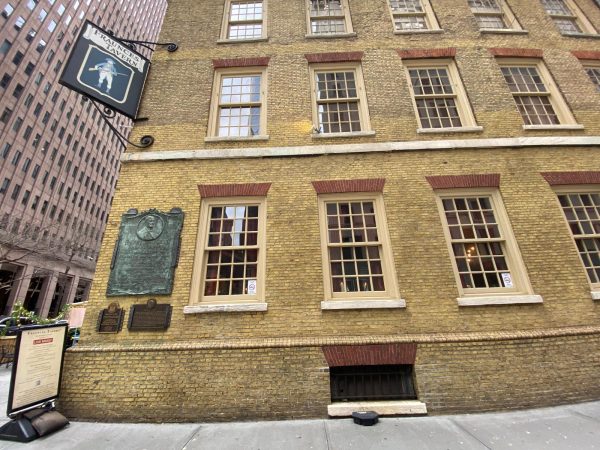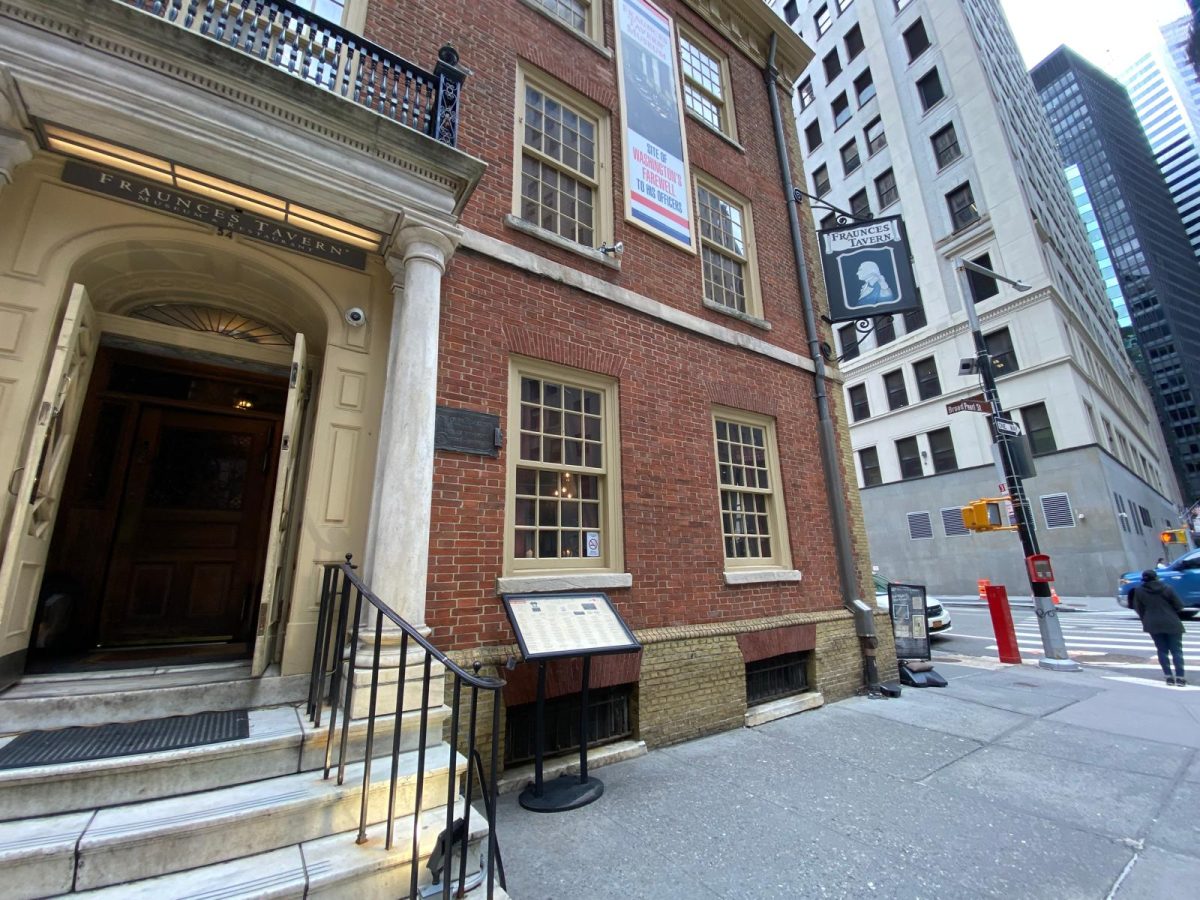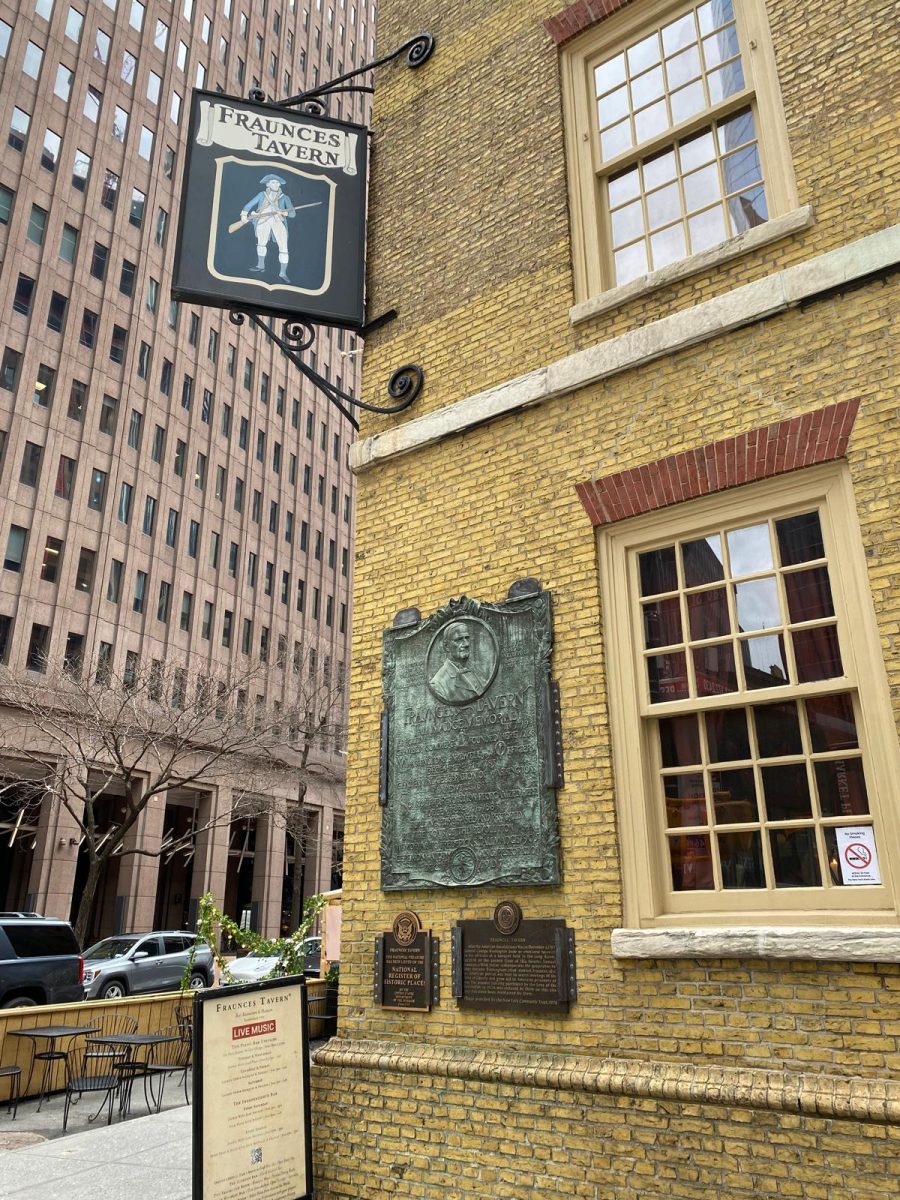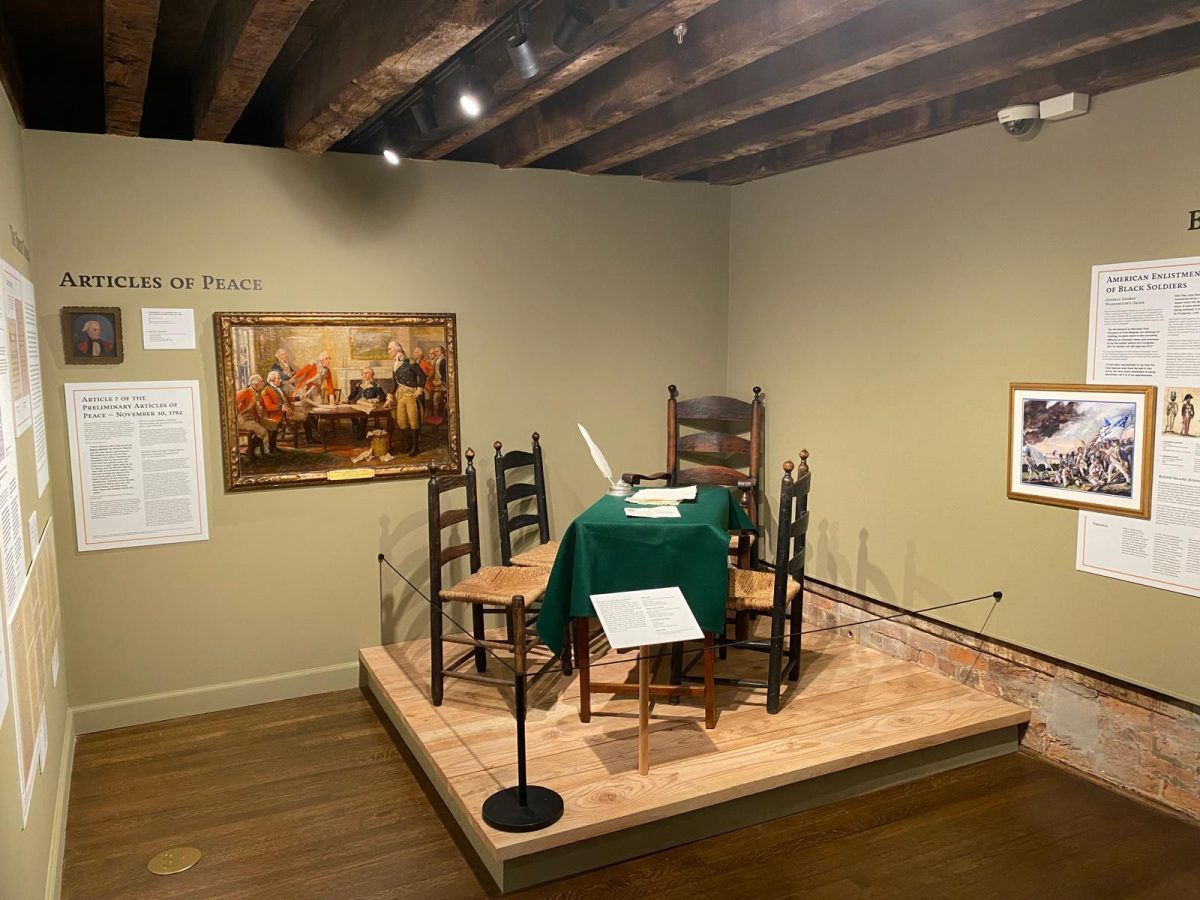High on the list of the oldest and most historic buildings in the United States, Fraunces Tavern’s rustic walls and rich artifacts transport passersby back to the Revolutionary era.
Standing proudly on the corner of an industrial block, the Tavern is a shrine to American history. Inside the brick walls and up the marble staircase lies a treasure trove of United States relics that serve to enlighten and entertain.
Fraunces Tavern rests on 54 Pearl St in Lower Manhattan. Now open as a museum, the Tavern once served an active role in American history under its most famous keeper, Samuel Fraunces. Entertainers, journalists, soldiers, and politicians all intermingled in the bustling building.
Today, the Tavern is both a restaurant serving traditional 18th-century food and a historical archive with countless exhibitions including George Washington in Comics and Pop Culture, Governing the Nation from Fraunces Tavern, and most recently, The Birch Trials.

History of Fraunces Tavern
The plot of land that now houses the Tavern was first purchased by Stephanus Van Cortlandt in 1686. Van Cortlandt’s son-in-law, Stephen (Etienne) De Lancey constructed the three-story brick house, which then served as a place for dance instruction, mercantile use, and storing imported goods. After changing ownership multiple times, Samuel Fraunces finally purchased the building in 1762.
A haven of activity, Samuel Fraunces’ Tavern was home to numerous New York clubs and organizations. From the New York Chamber of Commerce to the radical Sons of Liberty, vastly different organizations met in the Tavern to discuss news and progressive ideas, and to conduct meetings.
In 1775, Fraunces Tavern became the headquarters of the New York Provincial Congress, which governed the colony during the tumultuous year before the thirteen colonies officially declared independence from England in 1776. This legislative body elected New York’s delegates to the Second Continental Congress.
Role in the American Revolution
Throughout the American War of Independence, the Tavern served as a hub for revolutionary activity. June 18th, 1776, featured a grand banquet in honor of Commander in Chief of the Continental Army, George Washington. The boisterous celebration included over thirty toasts, numerous campaign songs, rifle fire, and expensive alcohol. The total cost of 91 pounds is equivalent to 23,719 U.S. dollars today.
As Commander in Chief, Washington frequented the Tavern to discuss strategy with his officers and interview prospective Generals, such as the Marquis de Lafayette. Other prominent revolutionary figures who were also regular visitors included Alexander Hamilton, John Jay, and Henry Knox.
In August of 1775, a militia of King’s College students including Alexander Hamilton seized the cannons of the British artillery battery in Lower Manhattan. The Royal Navy responded with a brief but yet destructive bombardment of the city. In the midst of the attack, a stray cannonball fell through the roof of Fraunces Tavern, scarring the building with the wounds of a revolutionary battle.
While the Tavern served the Continental Army in 1775, during the British occupation of New York, the building remained in active use. Samuel Fraunces, along with numerous other patriots fled the city. Fraunces’ loyalist son-in-law took control of the Tavern, hosting British generals and officials.
On December 4th, 1783, after the Continental Army emerged victorious, Fraunces Tavern hosted a farewell feast for Washington and his officers. In the famous Long Room of the Tavern, General George Washington heartfully embraced his officers saying, “I cannot come to each of you but shall feel obliged if each of you will come and take me by the hand.”
The Birch Trials
Following the surrender of Yorktown and the Treaty of Paris, Fraunces Tavern continued to play host to influential moments in early American history. During the summer of 1783, a commission of British and American delegates met to discuss the eligibility of Black loyalists to exit the newly formed country along with other fleeing British soldiers. Leading the English side of the delegation was General Samuel Birch. Today this impactful moment in history is referred to as ‘The Birch Trials.’
During the American Revolution, countless Black men fought in both the Continental and British Armies. Although mostly serving in support roles such as cooks, waiters, or artisans, multiple all-Black units were formed to fight the British directly. Many were also guards, spies, scouts, and artillerymen. James Armistead (later James Lafayette) rose to immense fame as a Black man in the American Revolution, working as a double agent to ensure victory at Yorktown.
During the Boston Massacre on March 5th, 1770, the first person killed was a mixed-race dockworker named Crispus Attucks. Credited as being the first casualty of the American Revolution, Attucks became a martyr of the rebellion and a symbol of Black patriotism.
Volunteer Black colonists also played a major role in the Battle of Bunker Hill. Such soldiers included Privates Peter Salem, Barzillai Lew, and Salem Poor, who all fought valiantly in the battle. Although ending in a British victory, the Patriot forces put up a formidable defense, inflicting more than twice as many casualties on their opponents, and convincing many in the worthiness of their cause.
As the war progressed, more Black soldiers fought on the side of the British. English generals often encouraged Black colonists to desert the American side. If they were enslaved, the British offered emancipation to those who chose to serve the Crown.
Lord Dunmore, the British Governor of Virginia, famously appealed to the colony’s large enslaved population and offered freedom to any Black colonist who joined the British. These names were dutifully noted in a book and referred to during the Birch Trials.
By the end of the war, 3,000 Black loyalist men, women, and children were documented and promised freedom by the British Army. The proceedings at the Birch Trials later determined to allow these families and individuals safe passage to British ships evacuating the independent colonies as free citizens of England.
Aftermath
The Birch Trials became one of the largest emancipations of enslaved peoples before the end of slavery following the American Civil War. Although having lost the Revolutionary War, the British ensured in the peace negotiations that their promises of freedom to Black loyalists were kept. Due to the extensive records kept, most formerly enslaved soldiers who fought in the English army were emancipated following the Treaty of Paris.
While the British largely kept their assurance of freedom to any enslaved soldier, the Continental Army’s record was far less successful. Despite promises of emancipation, most veterans were sent back to their former owners. The Act of 1783 only freed slaves who enlisted on behalf of their owners, disregarding those who escaped bondage to fight for a liberty for which they were then deprived.
Even men and women who achieved exemplary recognition for their bravery and vital service to the war effort had to fight for their right to freedom. The decisive victory at Yorktown would not have been possible without the intelligence uncovered by double agent James Lafayette. Regardless of his invaluable contribution to American independence, he was forced to petition Congress for his freedom, only managing to attain his liberty in 1787. The government that James Lafayette was vital to creating only acknowledged his natural liberty after direct intervention from his famous military comrade, the Marquis de Lafayette.
The Birch Trials therefore unveil a great hypocrisy in the American War of Independence. Although fighting to preserve their empire, the British ensured the freedom of 3,000 Black loyalists. If these men, women, and children had stayed in the newly “liberated” country, they would have once again lost the freedom that they had won by fighting in the war.
The history of emancipation in the United States of America is much more extensive and complicated than the abolition movements beginning in the mid-1800s. Abolition was a worldwide issue of importance with roots tracing back 100 years before the Emancipation Proclamation in 1863. Prior to the Civil War, the most extensive emancipation of enslaved peoples was an outcome of the Birch Trials and British intervention. This freedom only applied to Black loyalists who fought against the white colonists’ calls for liberty, cementing the great hypocrisy of the American Revolution.
To read another Science Survey article on the Fraunces Tavern, entitled ‘From a Colonial Outpost to a Revolutionary Symbol: The Evolution of American Identity at the Fraunces Tavern,’ click HERE.
The Birch Trials became one of the largest emancipations of enslaved peoples before the end of slavery following the American Civil War.



